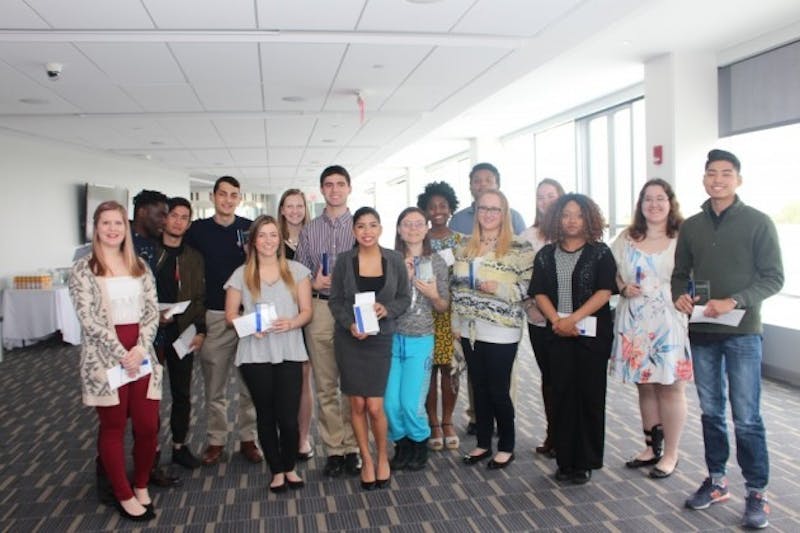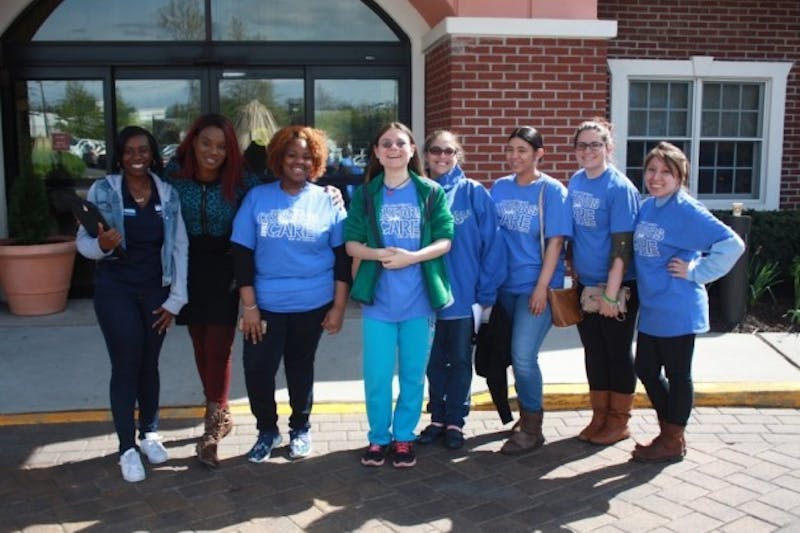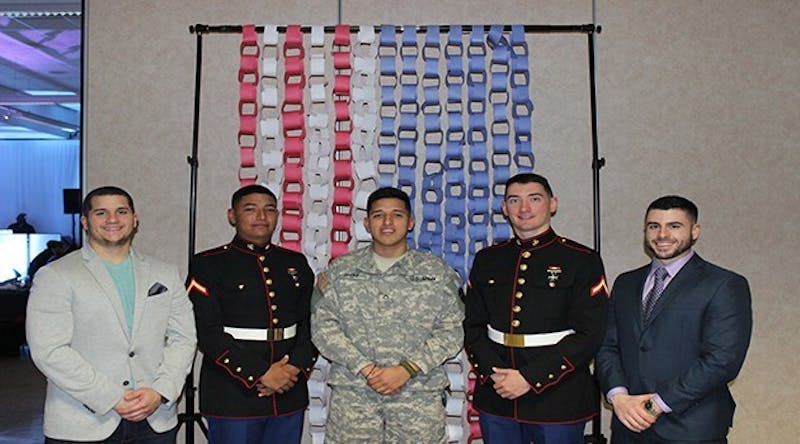Information, healthy snacks, the cougar in red and much more!
Jailene Burgos l The Cougar’s Byte
On Wednesday, February 17, 2016, the Center for Leadership and Service (CLS) hosted the event Women’s Heart Health Awareness Day from 10 a.m. to 2 p.m. in the Miron Student Center (MSC) Atrium to inform the Kean community of heart disease in women.
The atrium was divided into different parts, such as informational desk with donations, CPR, Fit to be Kean, healthy snack table and health screening. Attendees could enjoy a physical activity of some sort like some jump rope and Zumba and a CPR table. There was also a self-made CLS heart-healthy recipe book students could have. Some of the heart-healthy snacks up for grabs included nuts, dark chocolate and select fruit.
The purpose of this event was “a lot of people don’t know a lot about women’s heart heath, but the fact is that some women get through consistent struggle every day from suffering heart disease,” stated Shannon Brown, a sophomore majoring in Therapeutic Recreation and a Service Specialist in CLS. “It is an awesome event to promote and improve awareness of health for everyone not only for women. Everybody just goes through [MSC] fast, easy for quick meal, which is not a way to eat health.”
Even though everybody knows breast cancer is bad for women, they don’t know that heart disease of women is a bigger killer than breast cancer. It is important for people to be aware the risk of heart disease. Brown also recommends everyone should have a healthy diet, stay active and try to balance the nutrition when food shopping.
Alice Orejuela, Program Assistant for Health Service, managed the table of Fit to be Kean. Orejuela stated, “Exercise is beneficial for people’s health. You are recommended to do at least 30 minutes one time and 3-5 times per week with different types of exercise. Additionally, doing 2-3 strength exercise such as body blast is good for condition muscles.” For holding this event, she thought it was a good chance for different departments to know each other and show their activity by combining the focus on exercise, nutrition and awareness.
The informational table also prepared a specific plastic bag with information provided for students so they could know more about women’s heart health. There was a big difference in the atrium for this event as everything was decorated in red instead of Kean University blue. “Red is a bold color, which will gain more attention from people who will pass by and want to know what happen,” said Brown.
During the event, there were a lot of students learning how to do CPR. Dr. Palmieri, professor of the Physical Education Reaction Health Department, introduced that it was hands only CPR to teach how to do the chest pressure. If an individual notices someone is unresponsive and not breathing, he or she should call 911. The individual should go to the middle of the chest to give 100-120 compressions per minute until they wake up. If students take a full CPR class, they will learn different techniques. “But the hands only CPR just do the compression, because doing the compression is…better,” said Dr. Palmieri.

Information, healthy snacks, the cougar in red and much more!
Jailene Burgos l The Cougar’s Byte
Jatzuri Madrid, a sophomore majoring in special education, just finished the training of CPR. She expressed she liked this event, like learning about how to protect the body. She stated, “I like Zumba class; it is very good for stress reliever. And [Zumba] also helps me a lot to lose weight and stay fresh. Eating healthy and being active is also important.”

Information, healthy snacks, the cougar in red and much more!
Jailene Burgos l The Cougar’s Byte
National Wear Red Day began in 2003 when the American Heart Association, along with the National Heart, Lung and Blood Institute, realized that heart disease was being overlooked in women. Over these first 10 years, they have tracked the progress for millions of women involved and the improvements within the healthcare industry. Here are ten encouraging accomplishments that make all of those involved very proud (Source from American Heart Association):
1. Lives are being saved
2. Overall heart health has improved
3. Awareness of heart disease has increased
4. Unhealthy lifestyle risks have decreased
5. Diversity challenges have been identified and targeted
6. Grassroots movement has grown substantially
7. Advocacy efforts have been successful
8. Gender-specific guidelines have been developed for prevention and treatment
9. We’ve helped medical research become gender-specific
10. Gender-specific inequalities are identified and targeted
3. Awareness of heart disease has increased
4. Unhealthy lifestyle risks have decreased
5. Diversity challenges have been identified and targeted
6. Grassroots movement has grown substantially
7. Advocacy efforts have been successful
8. Gender-specific guidelines have been developed for prevention and treatment
9. We’ve helped medical research become gender-specific
10. Gender-specific inequalities are identified and targeted
5. Diversity challenges have been identified and targeted
6. Grassroots movement has grown substantially
7. Advocacy efforts have been successful
8. Gender-specific guidelines have been developed for prevention and treatment
9. We’ve helped medical research become gender-specific
10. Gender-specific inequalities are identified and targeted
7. Advocacy efforts have been successful
8. Gender-specific guidelines have been developed for prevention and treatment
9. We’ve helped medical research become gender-specific
10. Gender-specific inequalities are identified and targeted
9. We’ve helped medical research become gender-specific
10. Gender-specific inequalities are identified and targeted
Although great progress has been made in the first ten years, the fight is not over. It is necessary to improve awareness of heart disease risk with the joint of health, diet and regular exercise in the daily life. Kean University has taken the initiative when it comes to women’s health, so everyone should take the time to protect their own health.






